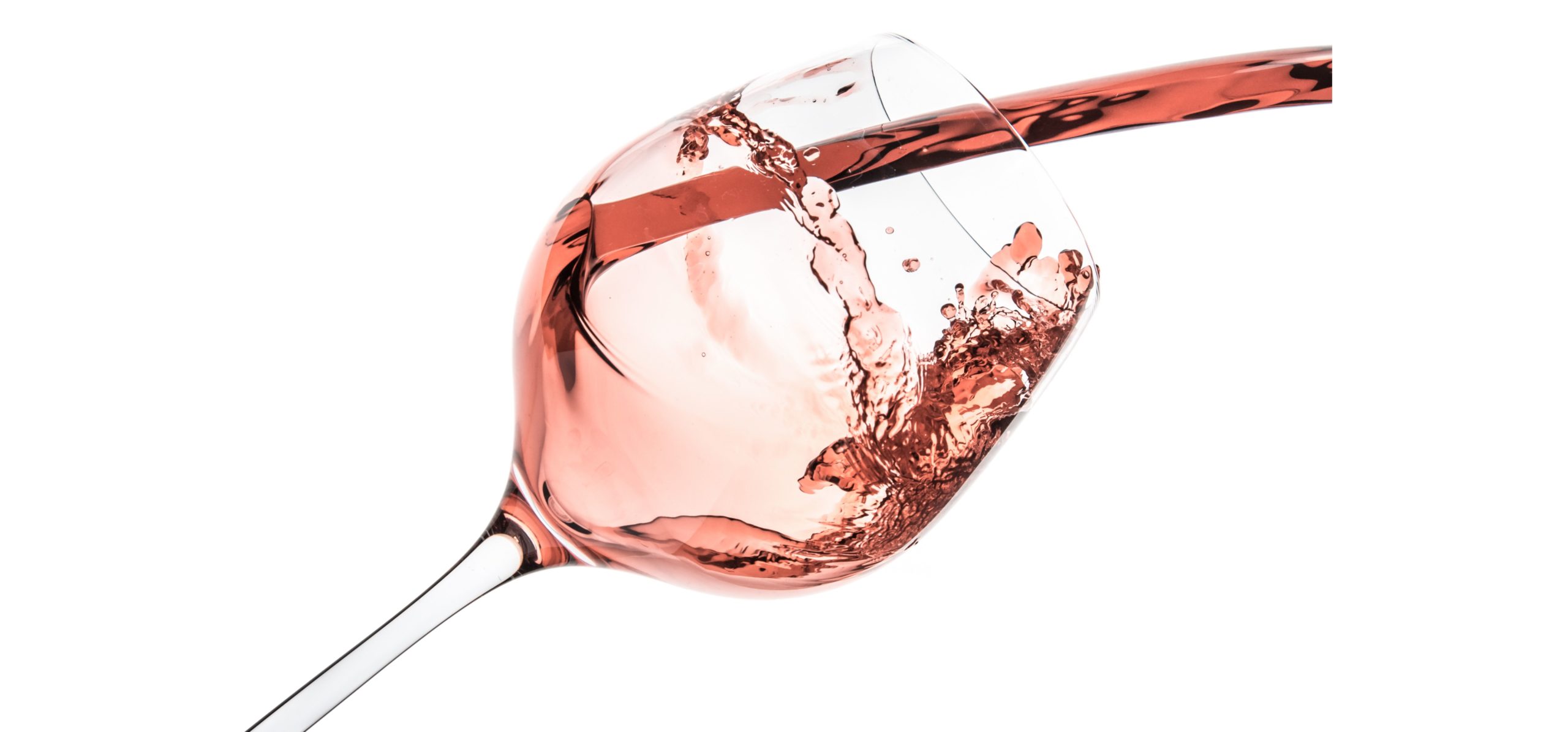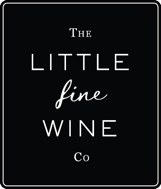
One of the questions we are asked most often during our wine tastings is how Rosé wine is made. Here, our Director Vicki outlines the basics.
Well… there is an easy way to make Rosé. This is to blend white and red wines together just before the wine is bottled. But, this is not seen as the best way to make a good Rosé wine (exceptions are Champagne and some Sparkling wines).
As is so often in life, the best way is also the hardest way!
In this case, to make good still Rosé, you can extract the colour from the skins of red grapes and use this to turn the juice of the grape (which is almost always white in colour) pink! This happens by pressing the grapes to draw out the red colour from the skins, and/or allowing the grape skins and juice to macerate together (often known as ‘skin contact‘).
In fact, it’s also possible to create a very light style of Rosé from a few different white grapes such as Pinot Grigio. Naturally, this grape has a slight pink tinge to its grape skin. With the right amount of maceration time, it will show a gentle pink or orange hue in the glass. This very light-coloured wine is traditionally called Ramato in Northeast Italy. Ramato literally means ‘copper’, as in a copper colour (rather than the slang for the local police, in case you were wondering!).
However, the complete answer to making Rosé wine is actually more complicated. If that has sufficiently answered your question about making Rosé, we are happy to help. But, if you’re interested in a deeper dive, see below for the long read.
Decisions decisions decisions
Depending on the desired style of Rosé, there are plenty of decisions the winemaker can make. So let’s dive into the technical side of Rosé…
The raw ingredient: great grapes in great places!
For Rosé wine-making, the first thing to look at is the grapes…
Generally speaking, the red grapes that already grow well in an area would also be used to make Rosé. So, you’ll find the red grape Pinot Noir is used for a Sancerre Rosé in the Loire Valley of France (It’s just too chilly to ripen, say, Cabernet Sauvignon or Syrah here). And, Zinfandel is used for many Californian Rosés, as this is a red grape that thrives in much of this that state. In Europe this is often part of the wine laws. The Sancerre appellation is a good example; Pinot Noir can make Red or Rosé wines if the name Sancerre is on the label.
Often a blend is best
There are plenty of Rosés that are a blend of different grapes varieties. One good example is a Bordeaux Rosé, where the red grapes Cabernet Sauvignon, Cabernet Franc and Merlot form the main blend. (See our Chateau Haut Rian Bordeaux Rosé for a particularly juicy example).
There are also some Rosés where red and white grapes can be macerated and pressed together at the start of the winemaking process, before fermentation. For example, while red grapes are usually needed for that famous pink Provencal colour, plenty of Cotes de Provence wines also contain the white grape Rolle (known in Italy as Vermentino). This gives a refreshing citrus character to the Rosé. Whispering Angel and Miraval both contain this Rolle grape. And just to the north, the Rhone Valley appellation of Tavel permits up to nine different grapes to be used in the blend, of which three can be white: Picpoul, Bourboulenc and Clairette. Try Chateau d’Aqueria for a great example of Tavel.
The different grapes will give different qualities to the wine. Pinot Noir has thin grape skins and therefore less colour, giving a lighter tint to the wine, along with good natural acidity and freshness. Cabernet Sauvignon and Merlot have thick grape skins and therefore more colour potential as well as more tannin and structure. And in warmer regions such as the South of France, the white grape Clairette is naturally high in acidity, which balances the richer, fatter character of some of the red grapes in the blend.
In many cases, the grower harvests grapes for Rosé wines earlier than grapes destined for a winery’s red wines. This ensures the acidity level in the grapes destined for Rosé is higher. This is an important component, as we all love the freshness often found in Rosé wines.
The technical bit, there are actually at least four different ways to make Rosé wine in the cellar
Earlier, we talked about pressing the red grapes and/or macerating them to move some of the colour from the skins into the juice. But in reality, the Rosé-making lines are a little blurred (and not because we have drunk too much Rosé, we promise). So, read on….
Method One: Direct Press Rosés (known in French as Rosé de presse)
For this method, the red grapes are harvested, taken to the winery and then pressed, promptly separating the grape skins and juice. There is minimal contact between the juice and the skins, and so only a light pink colour results. This is particularly the case if only the very first juice that flows from the press (known as the free-run juice), is kept.
Note, this is similar to how white wine is made, where the pressing happens early in the winemaking process and there is little maceration.
In most cases the grapes are destemmed (the grape stalks are removed) and crushed gently, before going to the press. This helps the extraction of red colour, although with some of the best Champagnes, for example, even these two steps don’t happen, and the whole bunch of grapes goes straight to the press. This means extremely gentle treatment of the grapes and a pale colour.
You may also see the words Vin Gris (translating to ‘grey wine’ in English; it really does sound better in French!). This is a Rosé with a particularly pale colour. It’s not a legal definition but typically is made from the juice that runs from the grapes after they are crushed, before they reach the press, or immediately after pressing.
Method Two: Skin Contact or Maceration
This really is a variant of the above, however the juice and skins are kept in contact for longer, anywhere from a couple of hours up to two or three days. This means the wines are often slightly pinker and with a little more tannin and structure than a direct press Rosé. This skin contact can either happen prior to pressing, often at cold temperatures with what’s known as a ‘cold soak’ (a maceration at around 10-15 degrees to extract the red pigment from the skins of the crushed grapes) or after pressing, before the juice is separated from the skins.
Method Three: Saignée (pronounced sane-yay, from French word ‘saigner’ meaning ‘to bleed’)
Traditionally, a Saignée Rosé (or Rosé de Saignée in France) is a sort of offshoot of the red winemaking process. The grapes are crushed and then the maceration begins as with a red wine. The longer time of contact and increased extraction between the skins and juice creates a deeper, darker style. Most importantly, around 10-20% of the juice is then separated or ‘bled off’. The separated portion is the Rosé. This leaves behind a much more concentrated red wine, so Saignée is a method of ensuring that your red wine has lots of flavour and structure.
This method was used to concentrate red wine in terms of tannins and flavour in Bordeaux amongst other key red wine regions. Often, because of the length of maceration and extraction, the colour and tannins are also increased in the Saignée portion, i.e the Rosé. Many Tavel Rosés are still made in this way, where the deep red colour, full body and firm structure are part of the style.
Note, Saignée Rosés are usually dry wines. An important point to remember is that a dark colour in Rosé does not, despite some assertions, necessarily equal sweet!
Method Four: Blending
As mentioned previously, blending is the easiest way to create Rosé. This method literally is blending white and red wines together. Contrary to what some might say, this method is allowed worldwide, although, with the exception of Champagne, French wine appellations usually forbid it. The highest profile example of wines that are a blend of white and red are some Champagnes, such as Moet et Chandon or Nicolas Feuillatte (in France you may see a reference to a Rosé d’assemblage). Anywhere between around 5 and 20% of red wine is added to the white before finally sealing the bottle. Some estates such as Louis Roederer or Billecart-Salmon decide against this, and use the skin contact method, as above, or the direct press method such as the English Sparkling estate Exton Park.
Other Styles
Today, much Rosé is made in a dry, light, pink style, in stainless steel tanks at cool temperatures which keep the berry fruit character and freshness. But, there are some notable exceptions:
Try Garrus by Chateau d’Esclans (maker of the aforementioned Whispering Angel) which is aged in oak barrels, or Rioja’s Tondonia Gran Reserva Rosado, which is aged in American oak barrels for four years. Both have a more complex, savoury style and the latter has a brick red hue, as the ageing process is so long and oxidative (i.e. with lots of oxygen swirling around the wine).
For a sweet Rosé, try a Rosé d’Anjou or Cabernet D’Anjou. If you are keen to experiment, the Brachetto d’Acqui from Piedmont is both sparkling and sweet!
Another style, the Rosé blush, can be confusing. Originally it referred to very light colour Rosés; however, it was adopted by Californian wine producers for their sweet Rosés made from the red Zinfandel grape.
If you are feeling thirsty, see our full selection of Rosés here
